Six
WRECKS

Despite the best safety practices, sometimes railroads fell victim to disastrous and/or deadly derailments. B&O was no exception. Here the fellows in the mail car are peering out the door as if they are saying, “Wha‘ happened?” The photograph dates from the 1890s and shows an accident on the Guyandotte River bridge between Guyandotte and Huntington. (Fred Lambert/ Bob Withers collection.)
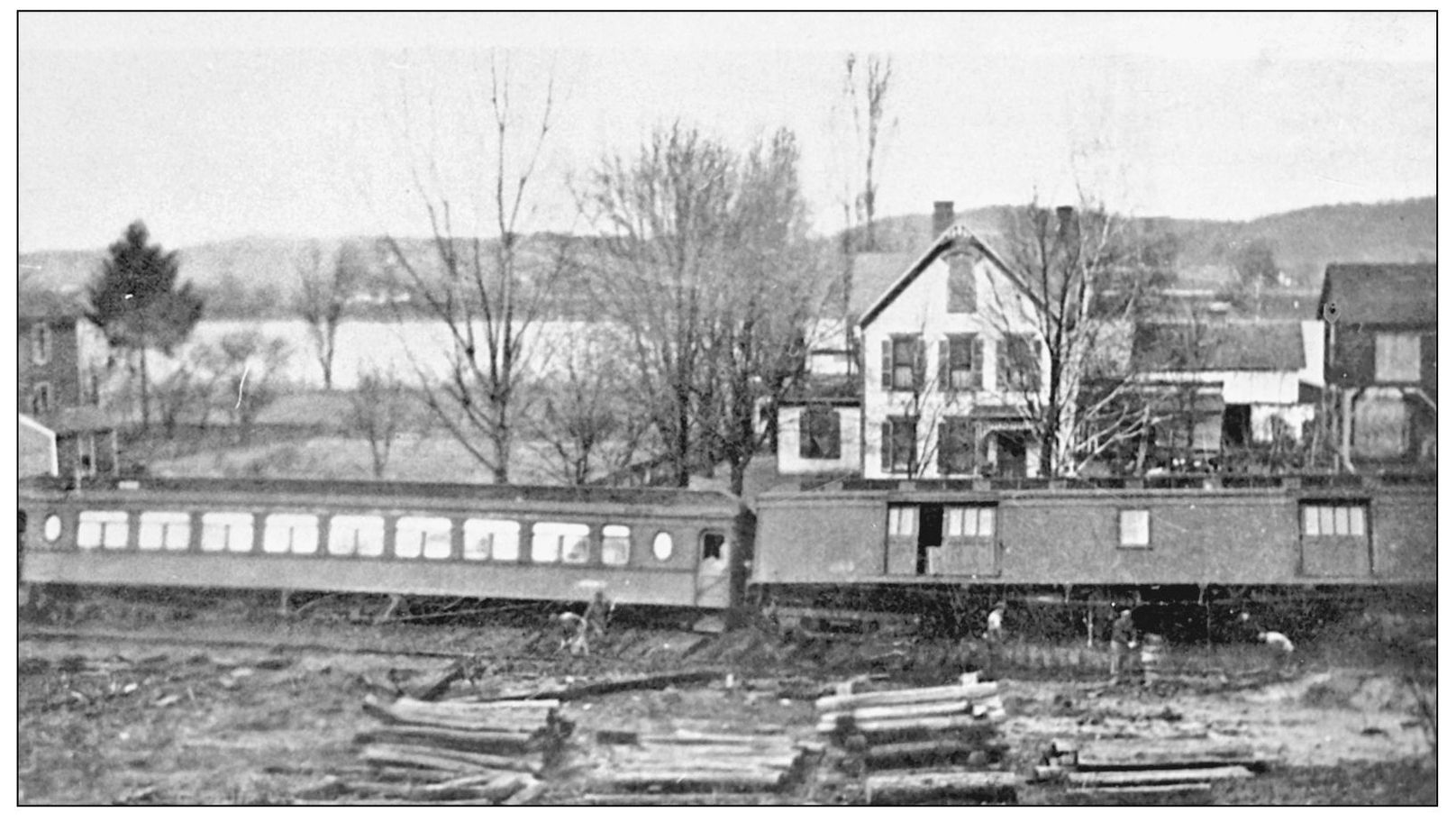
A broken rail derailed the second engine and six of Train 78’s nine cars in front of the Glenwood station at 11:50 p.m. on Thursday, December 11, 1919. Among the nine passengers and one express messenger injured was a man who suffered a broken leg and missing teeth; another received a dislocated shoulder. H. H. Morris, a former C&O superintendent, was climbing into his berth at the time of the accident but escaped with only a wrenched ankle. Sixteen taxis were dispatched to take passengers who didn’t want to resume their journey back to Huntington; a relief train dispatched from Parkersburg picked up the remainder. Five of the cars partially overturned against an embankment; the train was just 50 yards beyond a deep fill when it upset. (Both photographs Huntington Advertiser/Bob Withers collection.)
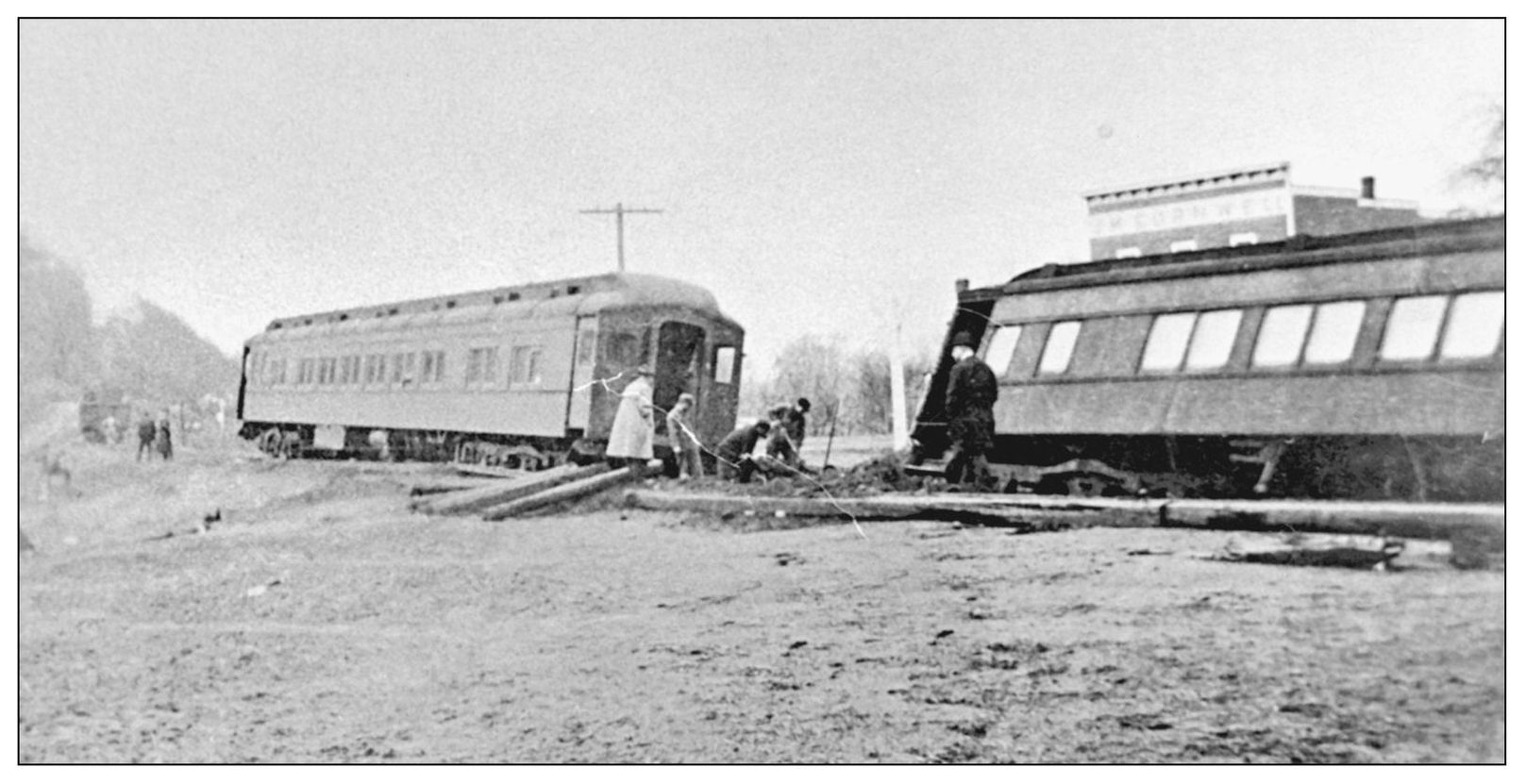
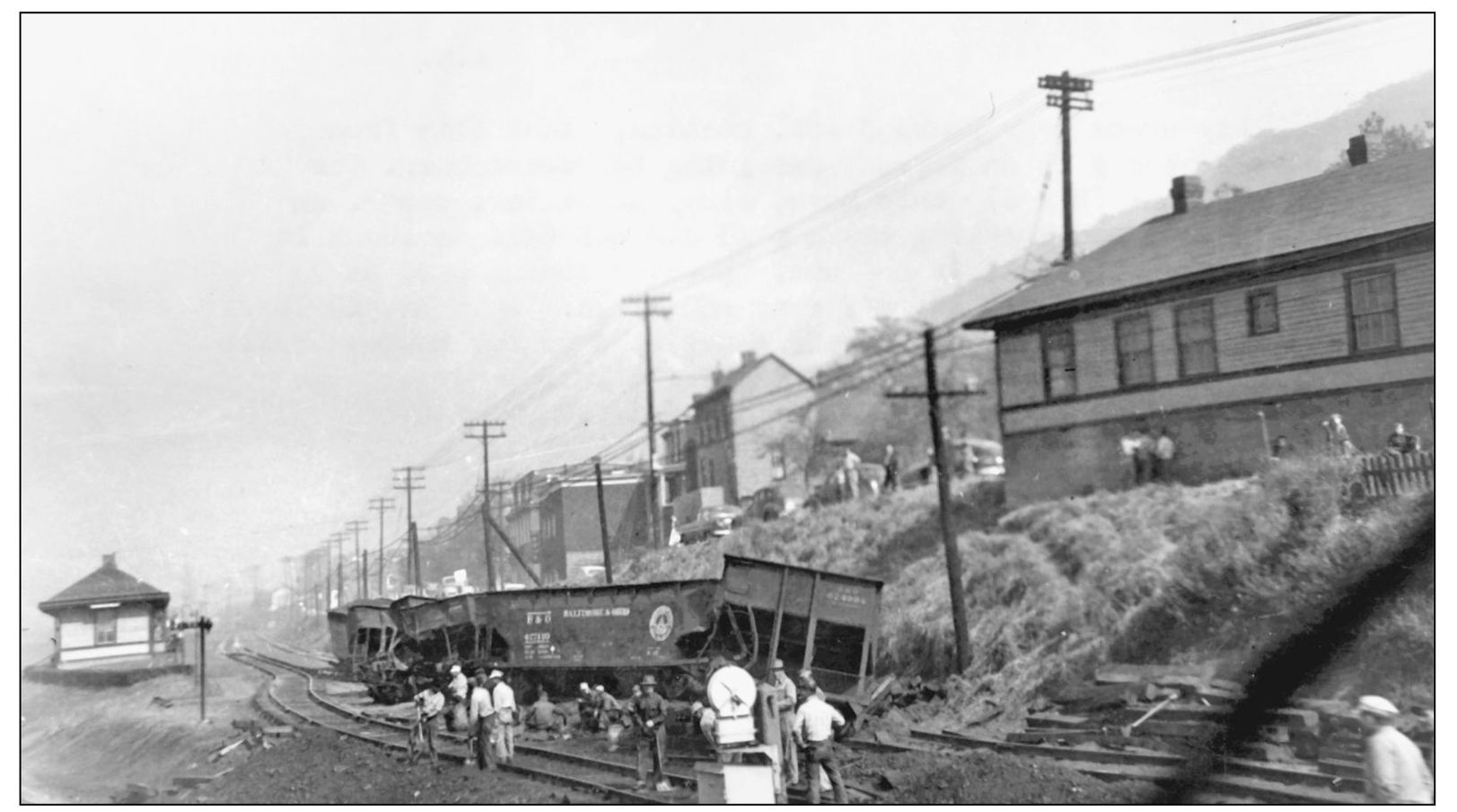
Coal cars lie in a twisted heap on the approach to the Ohio River bridge at Benwood Junction on Friday, October 8, 1948. The photographer is aboard Train 73, which had just departed the station at left. “The conductor on train 43 did not tell me about it; consequently I saw it too late,” he wrote. “Coming back down the river on 73, I was prepared.” (O. V. Nelson/Bob Withers collection.)

A C&O wreck train crew works in a precarious position—on a pile trestle—to rerail a combination mail/express/baggage car after Train 82 derailed on Saturday, December 26, 1953, less than three miles from its point of origin in Kenova. B&O found it easier to call C&O for help with accidents in the Huntington area rather than wait on a wreck train from Parkersburg. (Charles Lemley/Bob Withers collection.)
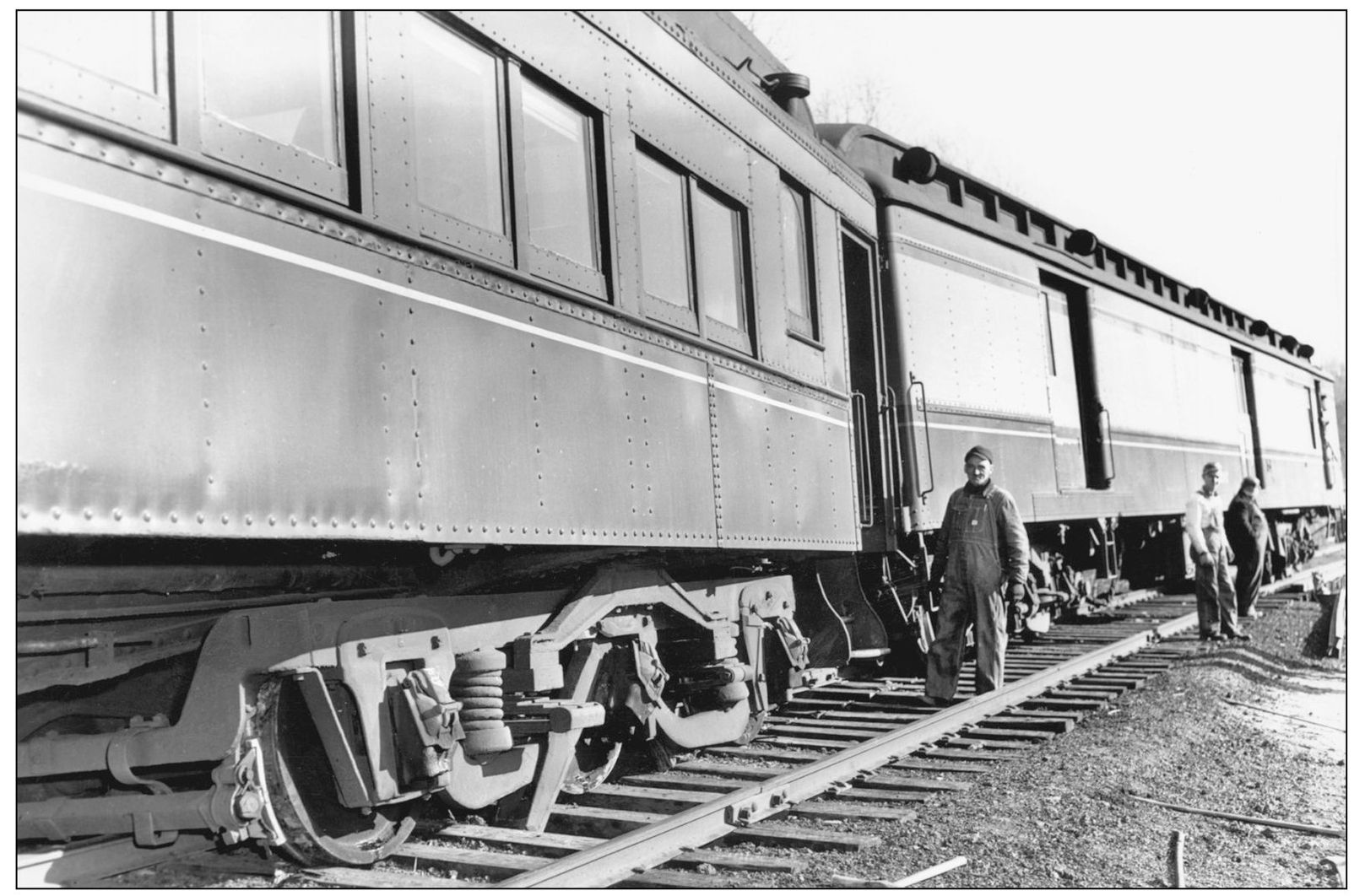
Railroaders assess the damage after the aforementioned derailment of Train 82, in which its combination mail/express/baggage car and coach left the rails east of Kenova on Saturday, December 26, 1953. One wonders, if there were any passengers on board that morning who may have been trying to get home after Christmas, how they were evacuated to find alternate transportation, since the right-of-way is in the woods a good distance from U.S. 60, and perched on a high embankment at that. It is fortunate, however, that the cars have come to rest just short of a tall trestle. (Both photographs Charles Lemley/Bob Withers collection.)
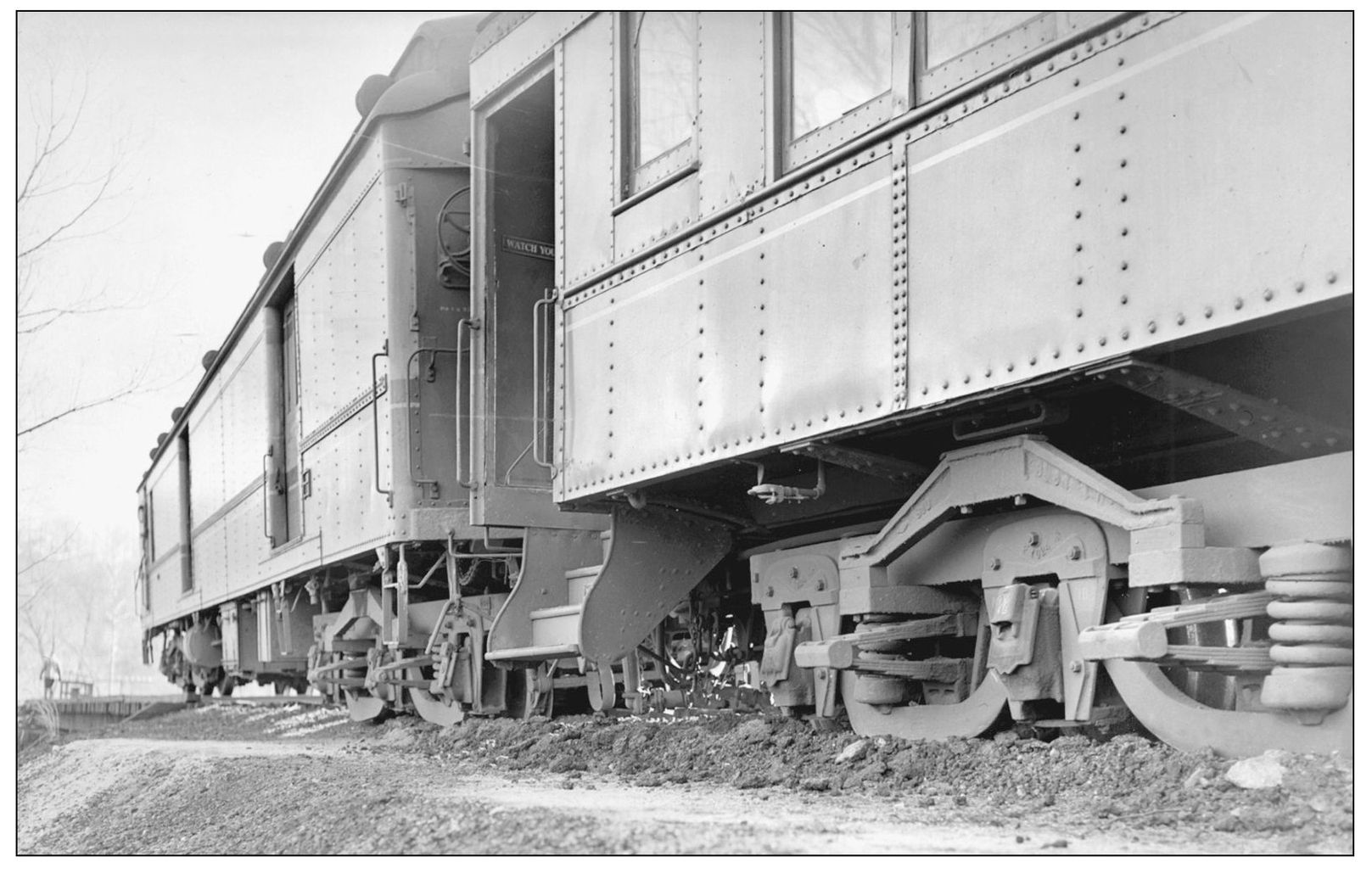

The photographer has walked westward several hundred feet and found the likely culprit for the December 26, 1953, wreck—a broken rail. Doubtless the pictures were made to provide evidence for the investigation sure to follow. Within a few months, service on Trains 81 and 82 will be downgraded anyway. Instead of offering passenger accommodations, Railway Express shipments, and mail-sorting capabilities en route in both directions between Parkersburg and Kenova daily except Sunday, the company will drop one side of the trains and substitute a single combination passenger/baggage coach for the two cars on July 5, 1954. Thereafter the locals will offer only passenger, baggage, and express service, but no mail carriage, and the trains will operate westbound on Mondays, Wednesdays, and Fridays and eastbound on Tuesdays, Thursdays, and Saturdays. Passengers will still be more or less welcomed according to that pattern, first in a coach and then in a caboose, until the Amtrak takeover on May 1, 1971. (Charles Lemley/Bob Withers collection.)
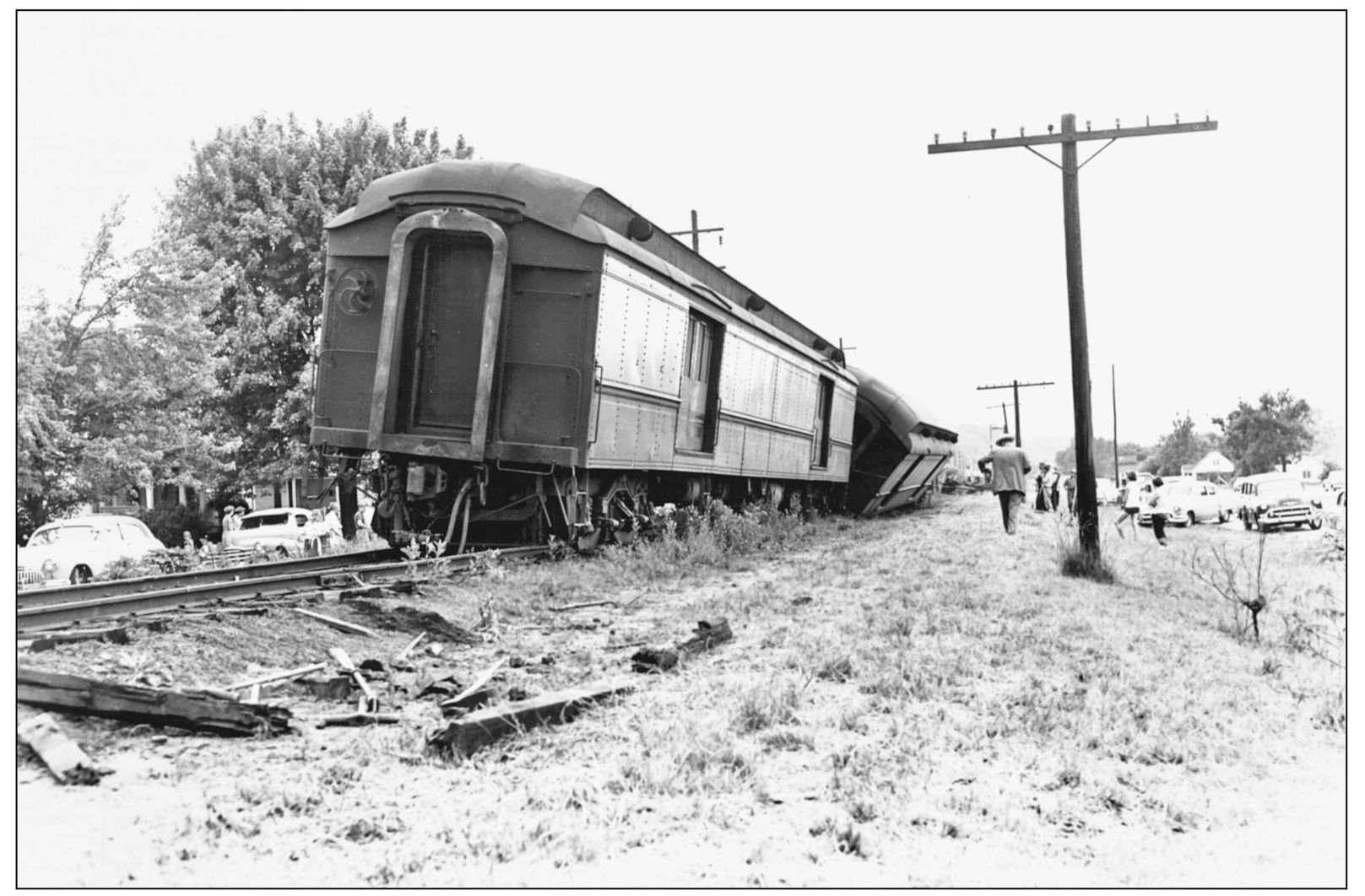
These views show the derailment of three mail and express cars on Train 72 in West Huntington at 1:15 p.m. on Tuesday, May 25, 1954. Neither the locomotive nor the rear car, a coach, left the rails. There were few if any passengers on board at the time, but a group of 30 schoolchildren planning to ride from Huntington to Point Pleasant and return was forced to forego the outing. Since the rickety right-of-way was paralleled by roadways—Waverly Road/U.S. 60 on the north and Wayne Street on the south—the mishap quickly attracted dozens of sightseers. (Both photographs Charles Lemley/Bob Withers collection.)
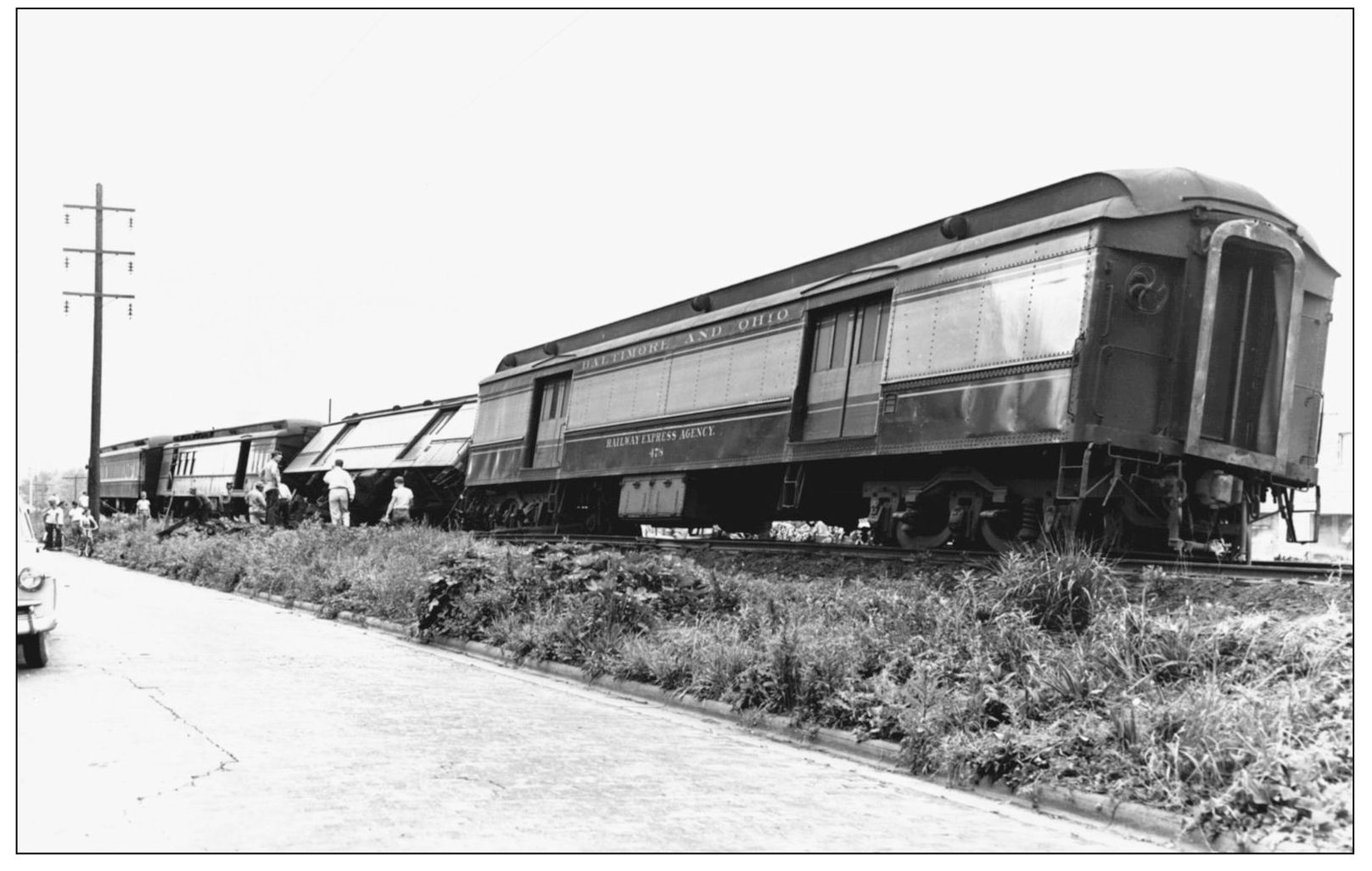

B&O sleeper/lounge%bservation car Wabash River lies on its side in the Hughes River after Train 31, the westbound National Limited, derailed on a curve just west of Toll Gate on the morning of Friday, February 24, 1967. Four people have been killed—two passengers, a Pullman Company porter, and B&O flagman Wade J. Greathouse. Perhaps Greathouse’s death is the most ironic—the train had detoured around an earlier derailment and was running so late that its regular flagman was out of time. Greathouse was pulled off his regular job in the freight pool to fill in. He wasn’t even wearing a passenger crewman’s uniform. As a matter of fact, the author ran into him the previous summer as he boarded the same train in Parkersburg with his family for a vacation trip. He said that would be his first ride on a train when he wasn’t working. (Larry K. Fellure Sr./Bob Withers collection.)

A B&O diesel lies on its side at the edge of the Ohio River after it and nine freight cars on Train 92 derailed following a washout near Letart on Wednesday night, February 10, 1960. Engineer H. D. Bee said his first thought after the plunge was that he might drown, but that gloomy possibility was thwarted by a clump of providentially positioned sugar maple trees. (John P. Killoran/H. D. Bee collection.)
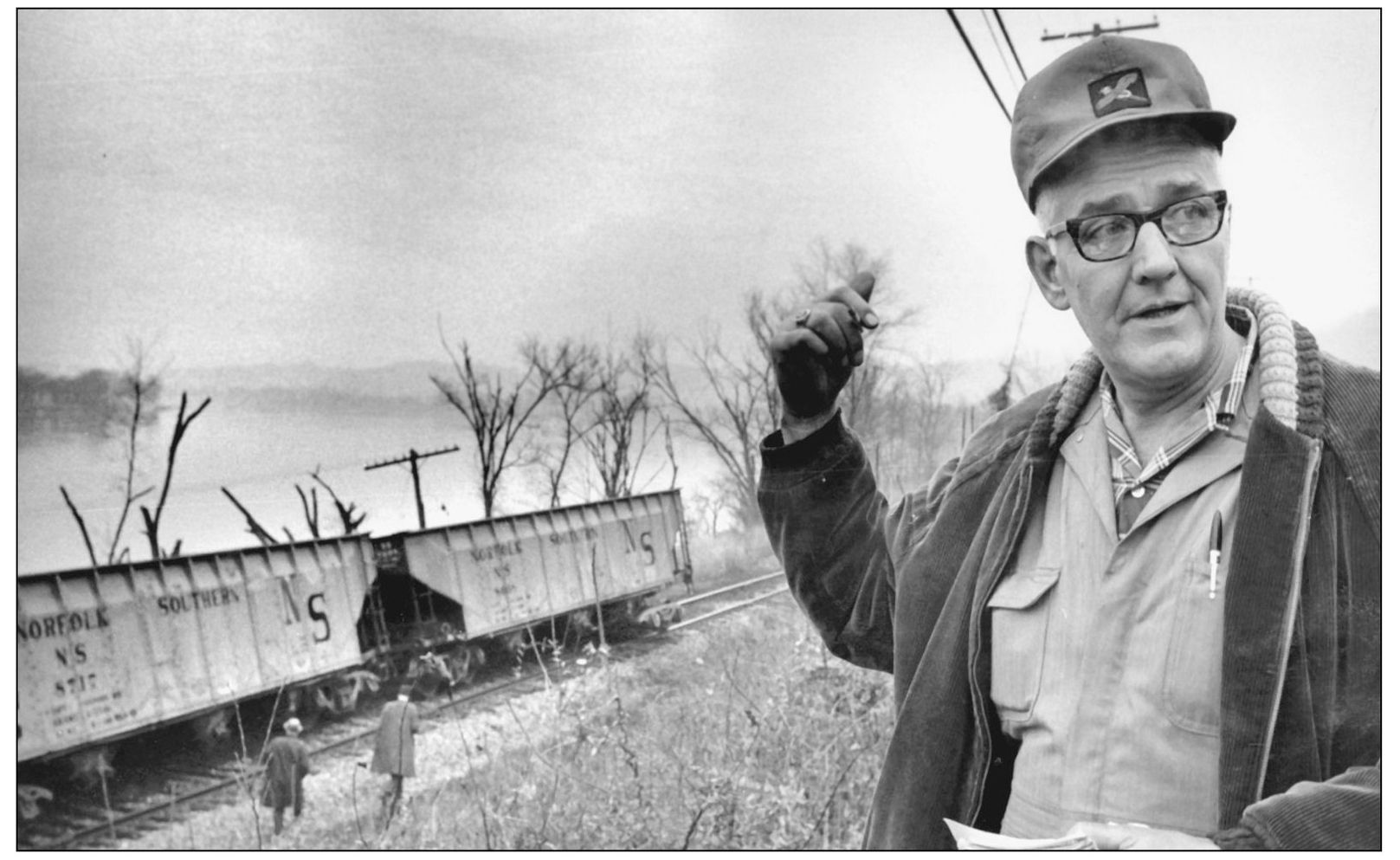
Conductor Don Whitlatch explains to a reporter what happened when 17 cars of 102-car Train 103 derailed beside the Ohio River at 11:55 a.m. on Wednesday, December 18, 1968, two miles east of Guyandotte. Whitlatch was thrown to the floor of his caboose by the sudden stop, which jackknifed four of the cars near the rear end. Neither he nor anyone else was injured. (Huntington Advertiser/Bob Withers collection.)

A top-heavy American Electric Power transformer lies on its side three miles east of Guyandotte in July 1974 after literally falling out of Freight Train 104. The fellow in the photograph above is scratching his head, possibly because he’s trying to figure out how to get the overturned device back on the rails. The colleague in the photograph below seems to be giving up the problem in frustration. Probably some of that frustration resulted from the fact that the power company advised B&O to run the car by itself in a special train rather than risk just such an occurrence, but the railroad played Scrooge and didn’t listen—until the lesson was learned and the rerailed car departed the second time, in a special train. What’s the old saying? Something about being penny-wise and pound-foolish, perhaps. (Both photographs Herald-Dispatch/Bob Withers collection.)

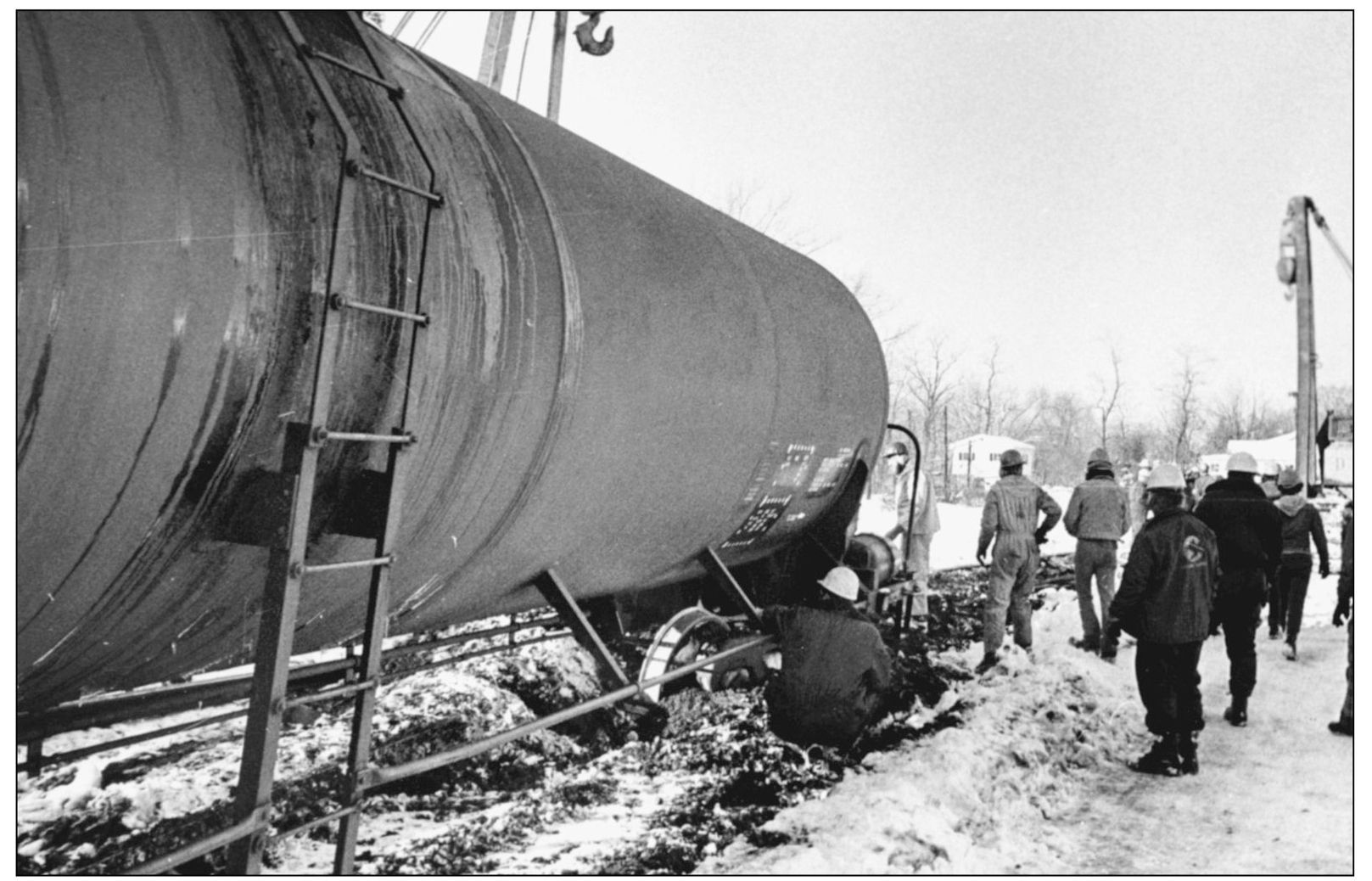
Crews work hard to keep from freezing while they clean up a derailment at Baden, just east of Point Pleasant, on Monday, January 23, 1978. Freight Train 103 spilled eight cars as it rolled through town at 4:25 a.m. One of the derailed cars spilled more than 20,000 gallons of toxic epichlorohydrin near the city’s water supply, prompting a precautionary evacuation of 300 nearby residents. (Lloyd D. Lewis/Bob Withers collection.)

The irony of the derailment of nine cars and a caboose of a westbound freight train at Lesage on Wednesday afternoon, May 2, 1979, is that one of the victims is “Chessie’s Safety Center,” a converted passenger coach that roams the system so instructors can teach railroaders how to keep just this type of event from happening. The embarrassing incident injured conductor W H. Trussell. (Herald-Dispatch/Bob Withers collection.)